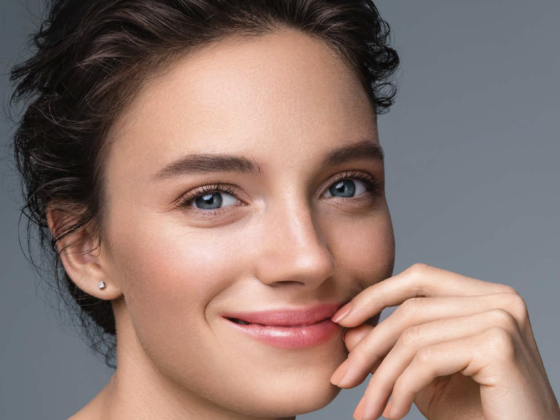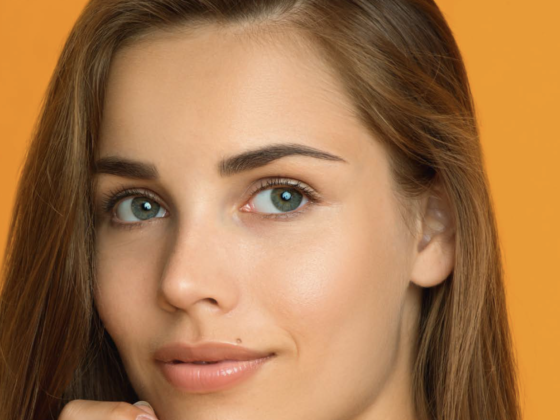Dr Sabine Zenker
Aging in the neck area, which appears as horizontal neck wrinkles, platysma bands, and skin laxity, is one of the most visible signs of aging, and certainly not the easiest to prevent or treat.
 The activity of individual muscles, as well as genetic background, also contribute to the severity of these signs of aging, and lately, we are seeing more and more young patients in our clinics who want a more defined oval and jawline and smoother and more even skin quality in the neck and decolletage region.
The activity of individual muscles, as well as genetic background, also contribute to the severity of these signs of aging, and lately, we are seeing more and more young patients in our clinics who want a more defined oval and jawline and smoother and more even skin quality in the neck and decolletage region.
Considering individual differences in terms of the structural and functional changes that occur in the skin of the neck over time, an individual approach is always important although the changes in this telltale area tend to present in the same way in all patients, regardless of their age: intrinsic aging involves chronological factors such as genetics and hormonal changes, leading to a decline in collagen and elastin production (Zhang & Duan, 2018). Collagen, a key structural protein, provides the skin firmness and elasticity, while elastin allows it to stretch and snap back into place. The amount and the quality of these fibres reduce with age, so the neck skin may lose its tautness and resilience.
Treatments that involve stimulating the abovementioned structures are gaining popularity: biostimulation is the buzzword of the moment!
These involve device-based solutions, such as radiofrequency (RF) and medical needling, skin resurfacing methods such as chemical peels and also injectables for mesotherapy (e.g. polynucleotides) or fillers (e.g. hyaluronic acid). The collagen stimulation and tightening effect are most effective when we reach the deeper layers of the skin.
Of the biostimulators currently available that improve the skin through neocollagenesis, we would like to draw attention to one fully liquid injectable that contains polycaprolactone (PCL) (©GOURI). The PCL that is widely known and currently available is typically used as a filler consisting of PCL microspheres suspended in carrier substance. In contrast to this filler, this new PCL-injectable does not contain any powder-like microparticles of PCL anymore as its PCL is fully dissolved resulting in a particle-free formula, which enables intradermal injection injection across larger areas with great spreadability resulting in the effective biostimulation of the treated area without side effects such as nodule formation. Additionally, as this PCL comes in a ready-to-use, prefilled syringe in a fully liquid form, no pre-procedure preparations are needed.
Case 1
The patient, a 47 y.o. woman, presented with several deep horizontal neck lines and wrinkled skin as well as increased skin laxity, especially in the submental area. A protocol with several intradermal injections of this liquid PCL to stimulate the body’s natural collagen in order to treat the aforementioned symptoms was established: a total of approx. 2 ml of the agent was injected in a linear retrograde pattern using a 25G, 50 mm blunt tip cannula by one entry point in the submental area, tracing three vectors on either side. Additionally, this liquid PCL was injected using the point-by-point-technique in a deep dermal fashion of 0.1cc per point (a total of approx.
10 points, spaced approx. 2cm apart). A total of three treatments were carried out at 6-week intervals.
The results of the treatment were checked twice – 2 and 4 months after the completed series of treatments. The horizontal wrinkles were still visible right after the first two treatments, yet noticeable progress was observed after the first treatment, showing less visible neck wrinkles and improved submental skin firmness when the patient visited for the second treatment. During the final check, the patient demonstrated even better results, having no visible signs of horizontal lines: as for the laxity, the results remained continuous showing long-lasting efficacy of the injected product.
To sum it up, a treatment with this innovative fully liquid Polycaprolactone PCL injectable has shown prolonged and progressive effectiveness in biostimulation resulting in skin tightening and skin rejuvenation with minimal downtime. Depending on the severity of skin aging and its specifics, the number of treatment sessions can be adjusted. Also, the combination with other treatment options such as botulinum toxin, fillers, skin resurfacing methods, or suspension threads can be easily personalised by the medical doctor. Moreover, remembering that anatomically the neck begins at the peri-cranio-cervical line and ends at the clavicle (Caplin & Perlyn, 2009), this protocol using liquid polycaprolactone that offers effective biostimulation with greater spreadability is a perfect add-on for the so-difficult-to-treat area, the neck!
 Dr Sabine Zenker: Dr Zenker is a certified member of the German, European and the American Society of Dermatology. She made her medical cursus in well-known medical university clinic departments in Munich, Paris, London and New York. She managed the dermatology department of the clinic Lanserhof, Tegernsee, Germany. Since 2003, Sabine Zenker has run one of Europe’s most prestigious private Aesthetic Dermatology practices she founded herself, DrZenkerDermatology, in Munich, Germany.
Dr Sabine Zenker: Dr Zenker is a certified member of the German, European and the American Society of Dermatology. She made her medical cursus in well-known medical university clinic departments in Munich, Paris, London and New York. She managed the dermatology department of the clinic Lanserhof, Tegernsee, Germany. Since 2003, Sabine Zenker has run one of Europe’s most prestigious private Aesthetic Dermatology practices she founded herself, DrZenkerDermatology, in Munich, Germany.















